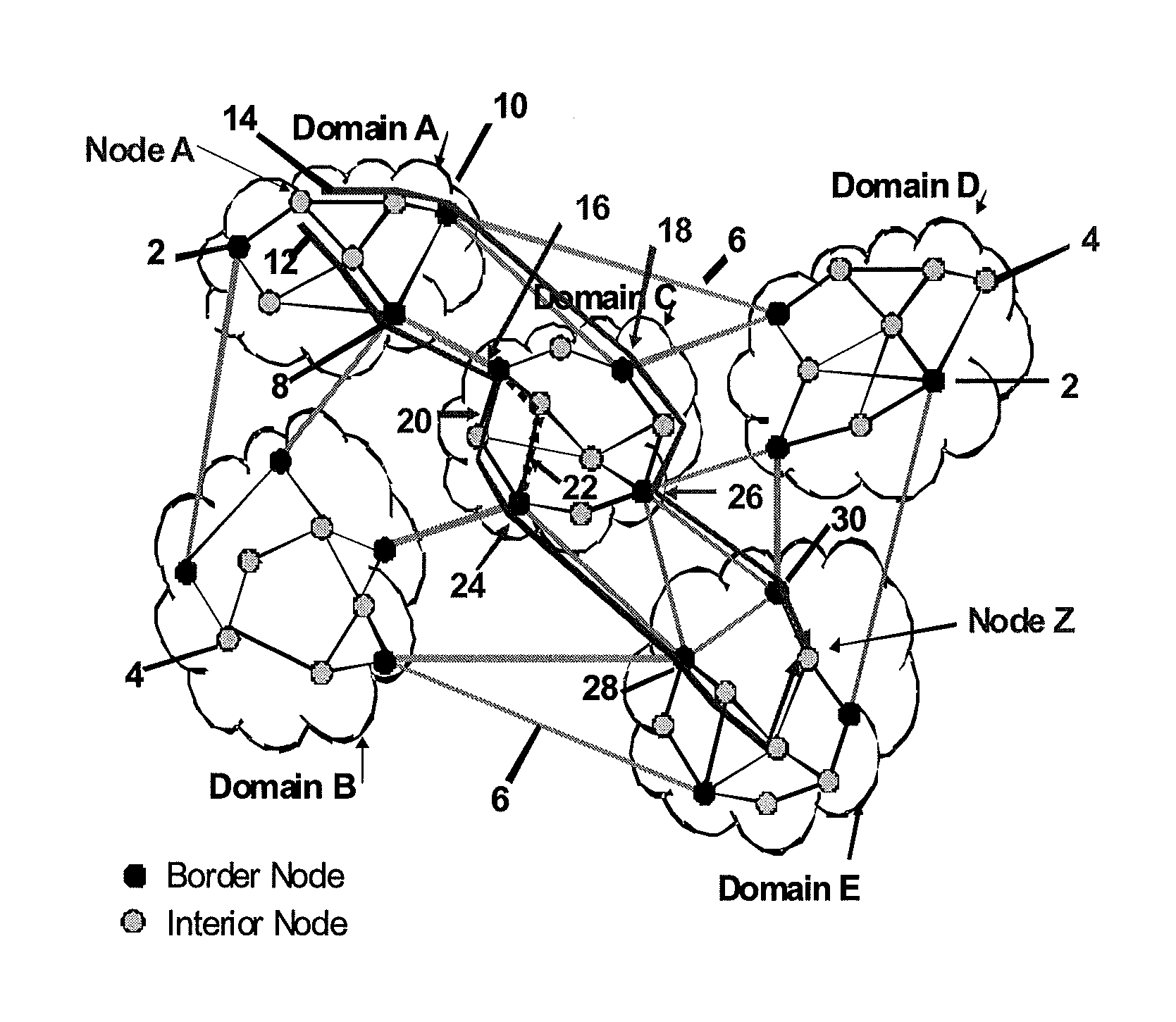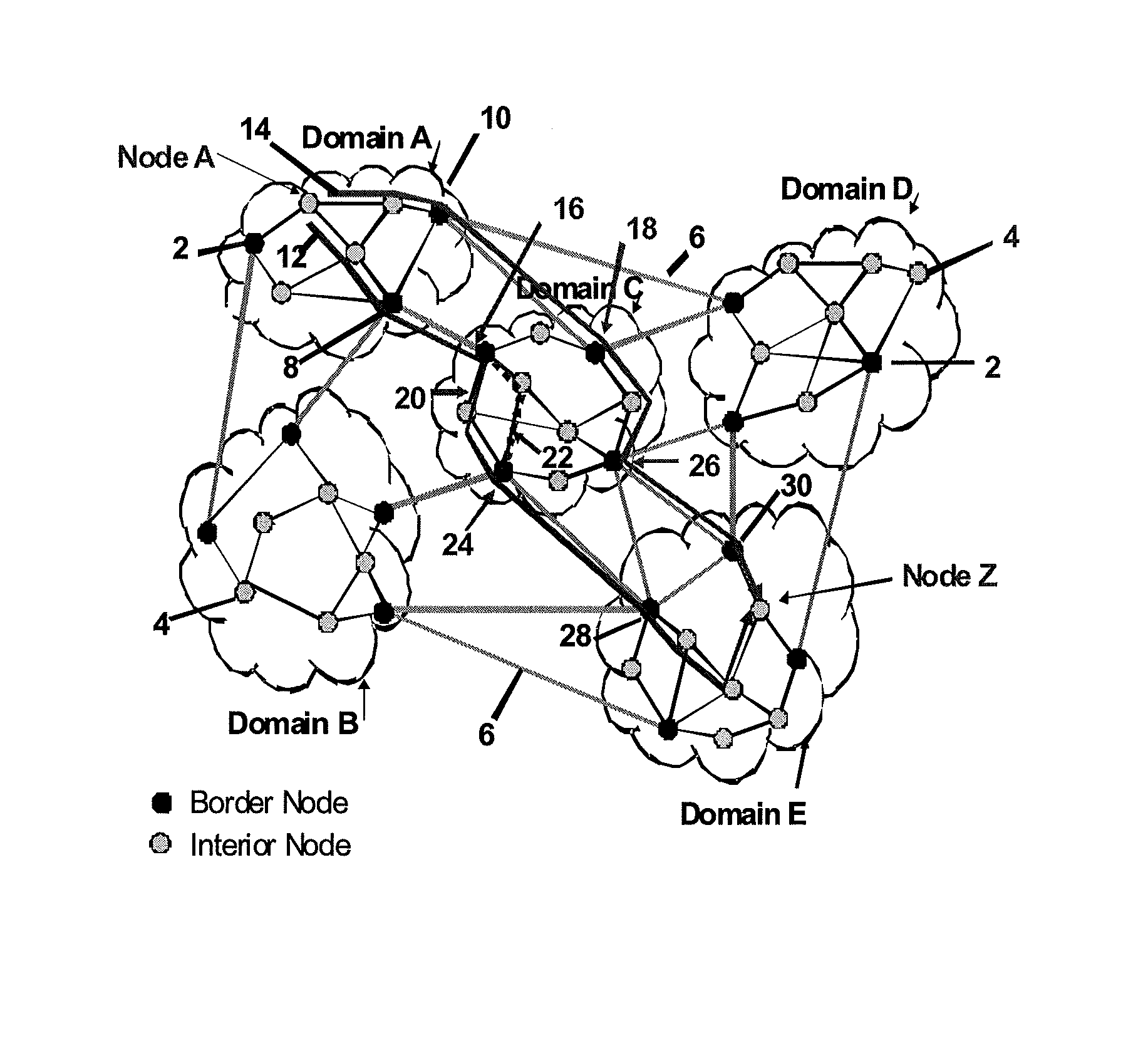Signaling protocol for multi-domain optical networks
a multi-domain optical network and signaling protocol technology, applied in the field of optical network signals, to achieve the effect of minimizing the amount of wavelength conversion, minimizing the total resources consumed for the connection, and fast recovery tim
- Summary
- Abstract
- Description
- Claims
- Application Information
AI Technical Summary
Benefits of technology
Problems solved by technology
Method used
Image
Examples
Embodiment Construction
[0027]The FIGURE shows an illustration of a multi-domain network. There are five domains (A, B, C, D, and E) each illustrated as a network within a cloud. Domain border nodes 2 are represented as black circles, and domain interior nodes (non-border nodes) 4 are represented as shaded circles. Border nodes are used to connect from one domain to another. Connections between border nodes in different domains are represented by links 6. As indicated above, these links are known as E-NNI links, and OEO processing is done on each end of the E-NNI link. Therefore there is no need to consider maintaining wavelength continuity between these links and links they connect to within a domain. The present invention is concerned with how to quickly set up wavelength connections between two nodes in different domains. A wavelength connection can consist of one or more wavelength channels. For purposes of simplicity only, the specification will restrict description to setting up a single wavelength c...
PUM
 Login to View More
Login to View More Abstract
Description
Claims
Application Information
 Login to View More
Login to View More - R&D
- Intellectual Property
- Life Sciences
- Materials
- Tech Scout
- Unparalleled Data Quality
- Higher Quality Content
- 60% Fewer Hallucinations
Browse by: Latest US Patents, China's latest patents, Technical Efficacy Thesaurus, Application Domain, Technology Topic, Popular Technical Reports.
© 2025 PatSnap. All rights reserved.Legal|Privacy policy|Modern Slavery Act Transparency Statement|Sitemap|About US| Contact US: help@patsnap.com


